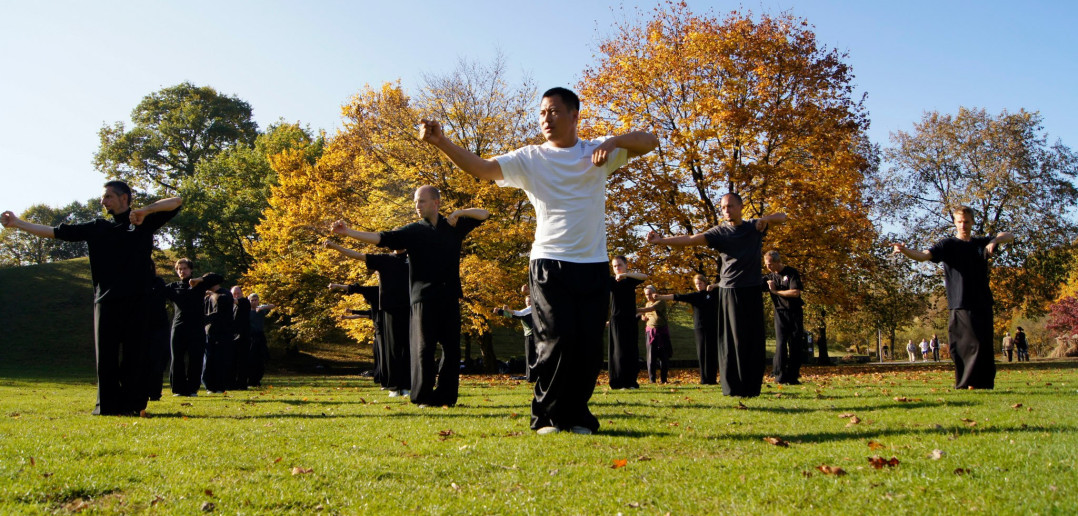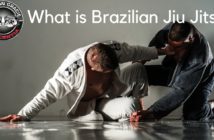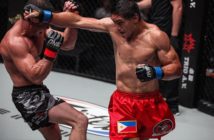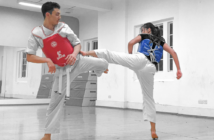In all martial arts, many students will one day debate the value of practicing forms v real fighting.
“Is practicing forms important for real fighting? Should I just be performing drills, or sparring?”
The answer to this is not a simple yes or no because it depends on how you practice your forms:
- Do you let your mind wander, or are you incredibly focused?
- Do you ‘take it easy’ and treat it as a warm-up, or are you challenging yourself each time with deep stances and powerful movements?
- Are you just ‘following the motions’, or do you have a specific goal in mind?
Practicing Forms V Real Fighting
At An Wushu, we believe form training done correctly is incredibly important for developing your kung fu:
- Forms develop what we call your ‘kung fu body’. Strength and endurance are a very important part of kung fu, but can be developed by many activities; the specific attributes you need for perfecting your kung fu, however – such as flexibility, timing & chi skills – can be best developed through forms
- Forms teach movements in a logical sequence (e.g., “Strike… if they block, then you do this”) and create useful muscle memory*
- If you practice your forms the way you fight – with spirit, power, and accuracy – then you’ll fight the way you practice your forms
*Many students are also curious about the applicability of ‘grander’ movements, such as flips, spins, kicks and so on. There are a few schools of thought on this:
- In years past, it was not uncommon for future masters to be taught incredibly slowly, often learning a single form over five years! If you have practiced a movement 100,000 times or more, you will definitely be able to use it in combat – even if it is perhaps not as efficient as it could be
- Many movements are taken to their extreme to better develop the body: e.g., if you train with your horse stance at parallel, spending minutes then hours in this position each day for many years, your legs will become incredibly strong. If you only stand at ‘fighting height’ for these years of training, you will miss out on this strength.
- In some styles, there are moves that are simply not meant to be used in combat, e.g., backflips, and are simply there to develop the body of the practitioner. Similar to Point 2, if you spend years training backflips, you will have much more explosive muscles and better co-ordination than if you didn’t. (Note: There are no movements like this in An Wushu, however, as part of a complete training system this is a great way to train.)
- Much of the power generated in kung fu is difficult to do in a small way until you can do it in a big way: e.g., even a beginner can sharply twist their body, push off their heel and throw a strong ‘cross’ punch (albeit at the probable cost of their balance). But if they limit their twist to only 1-inch, can they generate power? The answer is no. By starting with an over-exaggerated movement, a beginner is able to gain the internal feeling needed for any movement and gradually refine the movement to its usable form.
Conclusion
So, is practicing forms important for real fighting? As with anything in kung fu and in life, you only get out what you put in.
To learn more about An Wushu or how to study with Master An full-time in China visit www.StudyMartialArts.Org we work exclusively to help dedicated students connect to quality martial arts schools. This includes visa assistance and independent information all at no additional cost to you. Check us out with no obligation.





2 Comments
Great article! I spent 12-months in China with An Shifu and learnt only five forms – as much as I’ve learnt in two months at other schools. Each individual movement of each form was broken down, including its applications, so I knew what I was practicing and why I was practicing it, not just a sequence of movements. I honestly thought forms were silly before I went to An Wushu, being very impressed with formless styles such as JKD, Yiquan, but now I have a new appreciation for them.
Nice article.
My Sifu would spend about 1yr teaching us each form. I’m so greatful!